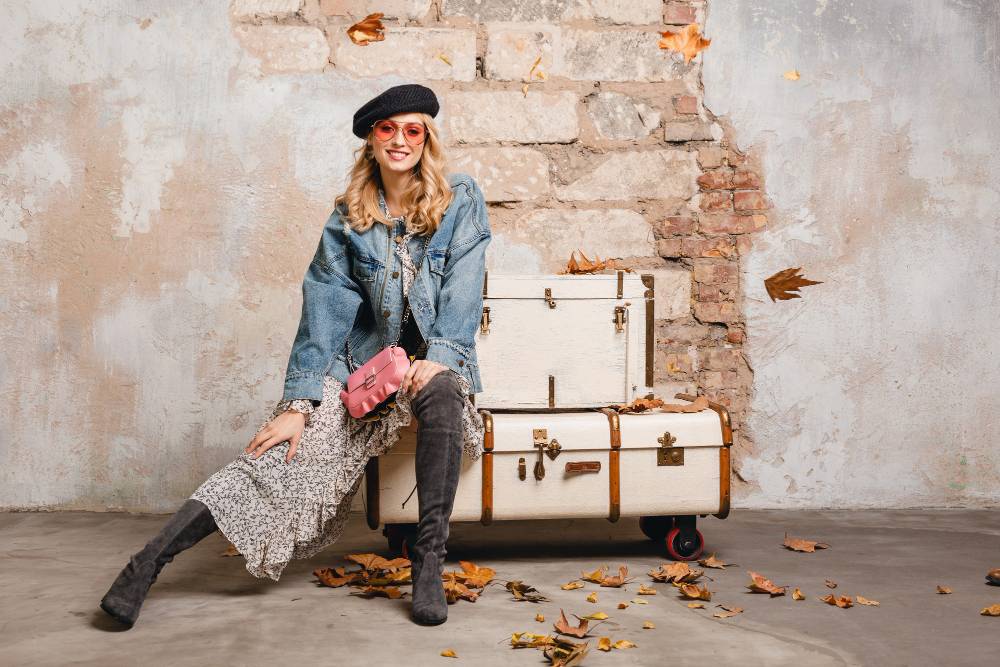Why Vintage Clothing is More Than Just a Fashion Statement
- 29-05-2025
- Business
- collaborative post
- Photo Credit: Freepik
Vintage clothing is more than just a wardrobe choice, it’s a lifestyle, a mindset, and a sustainable approach to fashion. Defined broadly as garments from a previous era, typically 20 years or older, vintage clothes carry stories, styles, and craftsmanship that modern fast fashion often lacks.
Whether it’s a 1970s suede jacket, a 1980s graphic tee, or a 1960s mod dress, vintage clothing allows wearers to connect with the past while expressing individuality in the present.
Timeless Appeal and Unique Style
One of the strongest appeals of vintage clothing is its timelessness. Fashion trends come and go, but certain silhouettes, prints, and tailoring from past decades remain iconic. From high-waisted trousers and retro blouses to classic trench coats and flared jeans, vintage items often offer a look that never truly goes out of style. Wearing vintage means you’re not following trends, you’re setting your own.
Vintage also helps you stand out. Because these items aren’t mass-produced in today’s market, they’re less likely to be seen on everyone else. A single well-preserved 1950s skirt or a 1990s windbreaker can become your signature piece, showcasing your unique taste and personality.
Quality and Craftsmanship That Lasts
Many vintage clothes were made during a time when quality and durability were fashion priorities. Unlike fast fashion’s often disposable nature, vintage pieces were designed to last. Fabrics like wool, silk, and cotton were commonly used, and items were stitched with greater care and attention to detail. This is one reason why vintage garments have survived decades and are still wearable today.
Owning vintage often means owning clothes that were built to endure. Details such as hand-sewn finishes, lined interiors, and metal zippers demonstrate the superior construction that defines much of vintage fashion.
A Sustainable Fashion Choice
Choosing vintage is also an eco-conscious decision. The fashion industry is one of the world’s largest polluters, with enormous amounts of waste generated through overproduction and discarded garments. By wearing vintage, you’re participating in circular fashion, reusing and repurposing existing materials rather than contributing to new production.
Buying vintage reduces landfill waste, limits the demand for new clothing production, and lowers the environmental cost of fashion consumption. Brands like Diehard Custom embrace similar sustainable values, crafting custom apparel and accessories that merge modern creativity with lasting quality, proof that timeless design and conscious production can go hand in hand. It’s a stylish way to dress that aligns with more sustainable living.
Exploring Eras and Fashion History
Each decade has its own distinct style identity, and vintage shopping is like diving into a living history of fashion. The structured silhouettes and muted tones of the 1940s, the bold prints and flower power of the 1960s, the glam rock edge of the 1980s, every era brings its own cultural influences and design innovations.
Wearing vintage lets you explore these eras hands-on. You can dress like a flapper from the 1920s one day, channel old-school athleticwear from the '90s the next, or blend pieces from different decades to create a completely new look.
Tips for Buying and Wearing Vintage
If you’re new to vintage shopping, here are a few tips to help you make the most of your experience:
Know Your Measurements
Vintage sizing can be very different from today’s sizing standards. Instead of relying on the label, measure your bust, waist, hips, and shoulders and bring a tape measure when shopping.
Inspect for Wear and Repairs
Always check the garment for signs of wear, damage, or previous repairs. Some fading and fraying is expected and even adds charm, but look out for major flaws like holes, stains, or broken zippers that could be hard to fix.
Mix with Modern Pieces
If you’re not ready for a full vintage look, try mixing one vintage item with modern basics. Pair a vintage blouse with your favourite jeans or add a retro jacket to your usual outfit. This helps ease into the style while keeping your wardrobe versatile.
Care for Vintage Properly
These clothes are often delicate and need special care. Always read care labels, hand-wash when needed, and store them away from direct sunlight and humidity.
Where to Find Vintage Clothing
Vintage shopping is easier now than ever, with options ranging from curated online stores and thrift shops to flea markets and vintage fairs. Whether you’re looking for a specific piece or browsing for inspiration, the thrill of the hunt is part of the charm. Sites like Official Vintage, for instance, specialise in curated collections from various decades, making it easier to explore styles you might love.
But local thrift shops and second-hand boutiques often hide treasures, too. Keep an open mind, be patient, and don’t be afraid to try something bold, you might just find your new favourite outfit.
Conclusion
Vintage clothing is more than a trend, it’s a way to celebrate individuality, practice sustainability, and honour fashion history. It encourages a slower, more thoughtful approach to style and allows you to dress with intention. Whether you’re after a signature statement piece or building a wardrobe filled with retro charm, vintage lets you express yourself while making a positive impact.
Other articles that may interest you...
Trending
Most Read Articles
Featured Videos
A Vision of Elvis Tenerife Promo
- 10-05-2025
TEAs 2025 Highlights
- 17-11-2025

























































